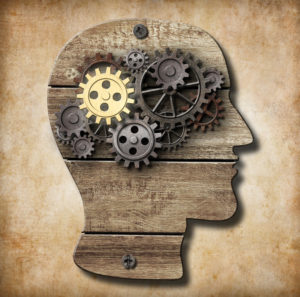Here is a summary of the positive effects of cannabis and the adverse effects that it can exert on humans:
The bad:
- Long-term use of either cannabis or cannabis-based drugs impairs memory and learning, say researchers. Their study has implications for both recreational users and people who use the drug to combat epilepsy, multiple sclerosis and chronic pain. On the bright side of this, only the length of marijuana abstinence was found to significantly affect the association between chronic marijuana use and reduced cognitive functioning. Specifically, cognitive functioning appeared to return to normal after about 72 hours of marijuana abstinence – a threshold identified in previous studies.
- Chronic marijuana use has been linked to increased risk of psychiatric problems. There’s even a name for the condition — cannabis-induced psychosis (CIP). Other mental issues that a heavy user has (like schizophrenia and depression) could be worsened with cannabis. Especially schizophrenia. Symptoms like temporary hallucinations and temporary paranoia were part of this

- Tolerance, psychological, and physical dependence can occur with prolonged use of cannabis. Tolerance to cardiovascular effects occurs quickly, but dependence is slower to develop and appears more likely with higher, more frequent dosing. Around 10% of people will develop addiction.
- Breathing problems – regular marijuana use can give you constant coughs and phlegm. They may go away when you stop smoking. It’s unclear if marijuana can lead to asthma or chronic obstructive pulmonary disorder. Cannabis actually helps open the airways at first. But evidence shows that regular marijuana use will make your lungs not work as well.

- Increased heart rate (pulse) – marijuana raises heart rate for up to 3 hours after smoking.
- Intense Nausea and Vomiting – regular, long-term marijuana use can lead to some people to develop Cannabinoid Hyperemesis Syndrome. This causes users to experience regular cycles of severe nausea, vomiting, and dehydration, sometimes requiring emergency medical attention.

The good:
This is a succinct list of the benefits of marijuana in medicine:
- Palliative care – cannabis alleviates the following symptoms that are frequent encountered in palliative care: intractable nausea and vomiting associated with chemotherapy or radiotherapy, anorexia/cachexia, severe intractable pain, severe depressed mood, and insomnia.
- Nausea and vomiting – cannabis relieves nausea and vomiting induced by chemotherapy regimens for cancer.
- Wasting syndrome (cachexia) and loss of appetite (anorexia) in AIDS, cancer patients and Anorexia Nervosa – The ability of cannabis to increase appetite has been recognized for many years; cannabis triggers hunger hormones – it affects specific brain regions that shift to ‘hungry’ mode while under the influence.
- Helps with motor dysfunction in Multiple Sclerosis, Amyotrophic Lateral Sclerosis and Spinal Cord Injuries – cannabis can ameliorate spasticity (the condition when certain muscles are continuously contracted) in these dreadful conditions.
- Epilepsy – cannabis use can reduce seizure frequency in some cases (endocanabinnoid system modulates neuronal tone and excitability)

- Pain – cannabis plays an important role in the modulation of pain states providing an analgesic effects; it relieves both acute and chronic pain. This is huge, considering the widespread conditions that eventually result in chronic pain (arthritides, muskeloskeletal disorders, osteoporosis etc…)

- Glaucoma – cannabis reduces the Intra-Ocular Pressure by up to 30%, a factor that plays a role in the development of glaucoma.
- Anxiety and depression – long-term cannabis users report reductions in anxiety, increased relaxation, and relief from tension
- Sleep disorders –THC (the cannabinoid with the psychoactive effects) decreases sleep latency and is associated with greater ease in getting to sleep; but also it consistently reduces total rapid-eye movement (REM) sleep and REM density (REM sleep is believed to benefit learning, memory, and mood; it is also the part of our sleep when we dream); due to the long half-life of THC, sedative effects typically persist into the next day following cannabinoid administration.

- Post-traumatic stress disorder (PTSD) – cannabis use in patients experiencing PTSD resulted in cessation or lessening of severity of nightmares (treatment duration 4 – 12 months or longer). Other self-reported benefits included an improvement in sleep time, a reduction in daytime flashbacks, and cessation of night sweats.
- Inflammation – cannabinoids can suppress the production of pro-inflammatory cytokines and chemokines and thus may have therapeutic applications in diseases with an underlying inflammatory component (dermatitis, psoriasis, Crohn’s, ulcerative colitis etc.…)
- Anti-tumor properties – cannabinoids seem to have a protective effect against carcinogenesis, and proper regulation of local endocannabinoid tone is likely an important factor in controlling the malignancy of different cancers; a number of pre-clinical studies have shown that endocannabinoids, certain synthetic cannabinoid agonists, and some phytocannabinoids can inhibit tumor growth and progression of numerous types of cancers through various mechanisms including promotion of apoptosis (self-death), cell-cycle arrest/growth inhibition, and prevention of metastasis through inhibition of tumor invasion, migration, and neo-angiogenesis (creation of new blood vessels, crucial to developing tumors)






